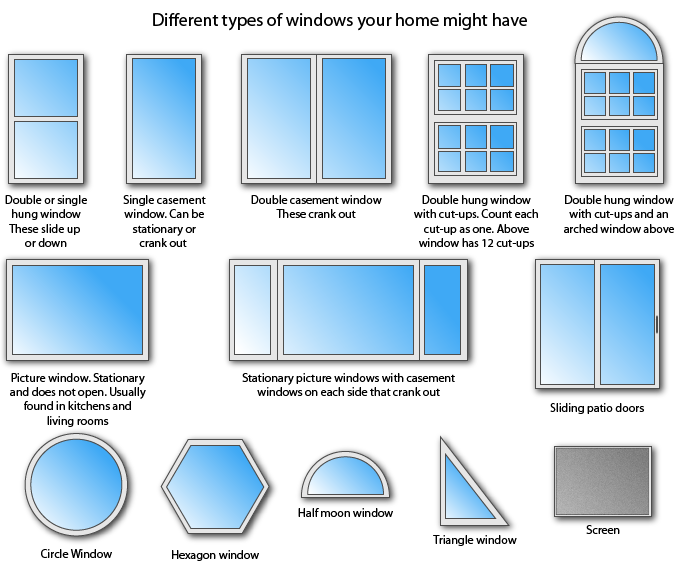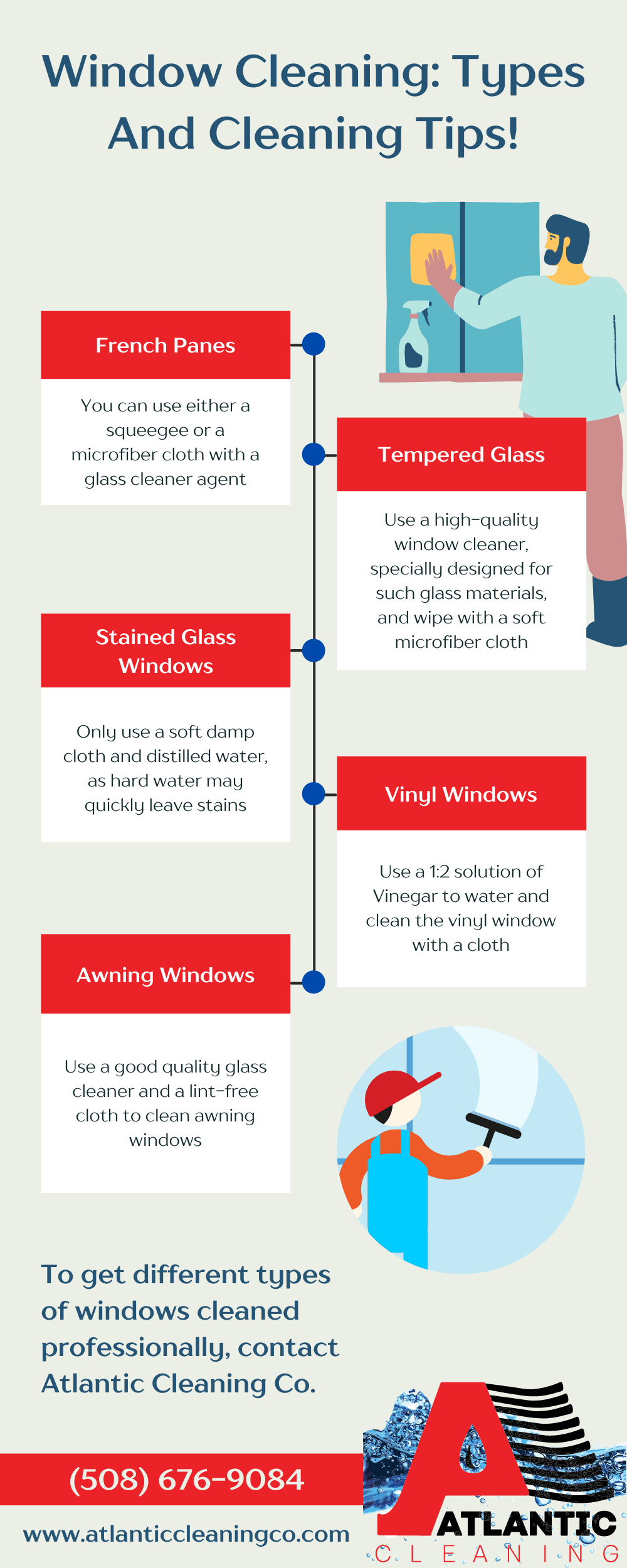Cleaning windows varies: glass requires a streak-free cleaner; wood or vinyl frames need gentle, non-corrosive products. Always use soft cloths to avoid scratches.
Clean, clear windows can transform the ambiance of any space, making it brighter and more inviting. Mastering the basics of window cleaning is essential for the maintenance of your home or office. Keeping your windows in top condition not only enhances the view but also protects your investment.
Whether you have traditional glass, tinted windows, or accompanying wooden or vinyl frames, each type requires specific cleaning techniques to avoid damage and maintain functionality. Equipped with the right tools and knowledge, you can tackle window cleaning with ease and confidence. By using eco-friendly cleaners and following straightforward, effective cleaning procedures, you can achieve sparkling, streak-free windows that boost your property’s appeal and longevity.

Credit: www.clearviewwindowsinc.com
Introduction To Window Cleaning
Welcome to the sparkling world of window cleaning, an integral activity in maintaining a luminous and inviting home or office. Cleaning windows is about more than just keeping up appearances; it’s a necessary task that ensures clarity, improves the longevity of your window panes, and enhances natural light. In our ‘Introduction to Window Cleaning’, we explore why clean windows matter and highlight some of the challenges that may arise during the cleaning process.
Importance Of Keeping Windows Clean
Clean windows are like the eyes of a home—they let you see out into the world, and the world sees into your space. Regular window cleaning leads to greater street appeal, an uplifting view, and more abundant natural light entering your space. Ensuring your windows are spotless also has practical benefits like improving energy efficiency by allowing more sunlight to warm your home naturally, and preventing the buildup of dirt and grime that can weaken the glass over time.
- Enhanced curb appeal: Sparkling windows make a great first impression.
- Boosted natural light: Clean glass permits maximum light infiltration.
- Increase in window longevity: Regular cleaning wards off corrosive substances.
Common Challenges In Window Cleaning
Window cleaning might seem straightforward, but it comes with its own set of obstacles. Issues like hard-to-reach areas, streaks left after cleaning, and weather conditions can all complicate the process. Moreover, different types of windows—such as stained glass, double-hung, or casement—require unique cleaning methods and solutions.
| Challenge | Description | Solutions |
|---|---|---|
| Accessibility | Windows in tall buildings or awkward spaces | Use of extension poles, ladders, or professional services. |
| Streaking | Marks left after cleaning, obscuring clear view | Streak-free cleaning solutions and proper technique. |
| Variety of Windows | Different types require different care | Understanding the specific needs of each window type. |

Credit: www.unitedcleaningcincy.com
Materials And Tools For Window Cleaning
Embarking on the journey of window cleaning, whether domestic bliss or maintaining spotless office views, requires more than just a squirt of glass cleaner and a cloth. Understanding the tools and materials necessary for effective window cleaning is the first and most crucial step. These essentials not just simplify the task at hand but also ensure sparkling, streak-free windows. Let’s break down the essentials for a well-equipped window cleaning arsenal.
Basic Tools Required For Cleaning Windows
Start your window-cleaning task right with the fundamental tools in your kit:
- Squeegee: An indispensable tool for a streak-free finish.
- Microfiber Cloths: Highly absorbent and lint-free, perfect for cleaning and polishing glass.
- Bucket: A sizeable bucket to mix your cleaning solution and dip tools.
- Scrubber or Sponge: For wiping away grime and softening stubborn spots.
- Extension Pole: Vital for reaching higher windows safely.
- Ladder: For accessibility to windows beyond arm’s length.
- Window Scraper: To carefully remove any adhesives or clings on the glass.
Choosing The Right Cleaning Solutions
Picking the appropriate cleaning solutions can make all the difference:
| Type of Cleaning Solution | Use Case |
|---|---|
| Commercial Glass Cleaner | For a quick and effective clean, especially for touch-ups. |
| Dish Soap & Water Mix | Ideal for heavy grime, a gentle yet effective solution. |
| Vinegar & Water Mix | Eco-friendly alternative that removes water spots and buildup. |
| Rubbing Alcohol & Water Mix | For a deeper clean and sanitization, especially during cold weather. |
| Ammonia-based Cleaners | Effective for greasy windows but requires proper ventilation. |
Safety Equipment For High Or Hard-to-reach Windows
Safety always comes first, particularly when dealing with elevated windows. Equipping oneself with the right safety tools is not just a necessity—it’s an imperative. Below are safety items for these scenarios:
- Sturdy Ladder: Ensure it is well-balanced and suitable for your height requirements.
- Non-Slip Shoes: For a secure grip on ladder rungs and slippery surfaces.
- Harness: When using an extension ladder, a safety harness can prevent falls.
- Gloves: To protect your hands and improve grip on cleaning tools.
- Safety Glasses: To shield your eyes from chemical splashes and debris.
- Window Cleaning Robot: For the most challenging-to-reach windows, a high-tech solution that minimizes the need for ladders.
Cleaning Techniques By Window Type
Embarking on the task of window cleaning may seem straightforward, but certain types of windows require specific cleaning techniques to achieve that crystal clear shine without causing damage. The material, functionality, and accessibility of different window styles can greatly influence how to approach your cleaning regimen. This section delves into the cleaning techniques appropriate for various window types to help you efficiently and safely get the job done.
Techniques For Cleaning Single-hung And Double-hung Windows
Cleaning single-hung and double-hung windows is a task that can be carried out with precision and care. Due to their sliding sashes, both types have similar cleaning procedures.
- Start by raising the sash for the lower part of the window to access the exterior side.
- Use a soft microfiber cloth or squeegee, along with a mixture of mild detergent and water.
- Clean the window from top to bottom in a zigzag pattern, ensuring all dirt is removed.
- For double-hung windows, tilt both sashes inwards and repeat the process.
- End by wiping down the frame and sills, removing any excess water.
How To Clean Sliding And Casement Windows
When addressing sliding and casement windows, it is crucial to focus on their tracks and hinges for long-term functionality.
- Begin by cleaning any debris from the window track with a vacuum cleaner and a soft brush attachment.
- For the glass, use a diluted solution of vinegar and water, which serves as an eco-friendly cleaner.
- Apply the solution with a sponge before squeegeeing away the dirt, moving horizontally for sliding windows and vertically for casement windows.
- Lubricate the tracks and hinges to ensure smooth operations after cleaning.
Special Considerations For Skylights And Bay Windows
Skylights and bay windows present unique challenges due to their design and position.
| Window Type | Cleaning Tips |
|---|---|
| Skylights |
|
| Bay Windows |
|
Advanced Window Cleaning Tips
Embarking on the quest for crystal-clear windows is a journey better charted with advanced techniques. After covering the basics, it’s time to delve deeper into strategies pro cleaners swear by. With these Advanced Window Cleaning Tips, you’ll take your skills from novice to expert, ensuring your windows are not just clean but sparklingly so.
Dealing With Water Spots And Mineral Deposits
Ridding windows of water spots and mineral buildup requires a tactical approach. Begin with a mixture of distilled vinegar and warm water, applying it generously to afflicted areas. Let it soak for a few minutes for optimal effect.
- For stubborn spots, increase the vinegar ratio or use a commercial cleaner designed for mineral deposits.
- Use a soft-bristled brush to gently scrub. Avoid harsh abrasives that can scratch the glass.
- Rinse thoroughly with water and dry with a squeegee or microfiber cloth.
Maintaining Window Sills And Tracks
Maintaining the sills and tracks of windows often gets overlooked, yet it’s vital for their proper function and longevity. Clear out debris and dust using a vacuum with a brush attachment. Then, wipe down sills and tracks with a damp cloth.
- For deeper cleaning, a mixture of soapy water and a small amount of vinegar does wonders.
- Clear out clogged weep holes with a small, flexible tool, like a pipe cleaner.
- Lubricate the tracks occasionally with silicone-based lubricants to ensure smooth operation.
Expert Tricks For Streak-free Windows
The quest for streak-free windows is never-ending. Begin with distilled water in your cleaning solution to prevent residue left by minerals in tap water. Add a small amount of dish soap for its grease-cutting properties. Employ tools of the trade:
| Tool | Function |
|---|---|
| Squeegee | Removes water and cleaning solution efficiently, reducing streaks. |
| Microfiber Cloths | Attracts particles and dries surfaces without leaving lint or streaks. |
- Wash one side of the window horizontally and the other vertically. This technique helps to quickly identify which side has streaks after drying.
- Polish the glass with a clean, dry microfiber cloth for a shining finish.
- Choose a cloudy day for cleaning to avoid the sun drying out the solution too quickly, which can lead to streaks.
Preventive Measures And Regular Maintenance
Maintaining the clarity and longevity of your windows doesn’t merely involve reactionary measures; it requires a proactive approach. Embracing preventive measures and regular maintenance can shield your windows from the wear and tear of the elements, extend their life, and enhance your home’s curb appeal. This section explores how to incorporate care routines seamlessly into your lifestyle, ensuring that different types of windows receive the customized attention they need.
Creating A Cleaning Schedule For Different Types Of Windows
Adopting a routine cleaning schedule is critical in preserving the look and function of your windows. Different window types, such as single-hung, double-hung, or casement, may require varying frequencies and methods of cleaning.
- Casements and sliders, often exposed to the elements, benefit from quarterly cleaning.
- Double-hung windows in rooms with high moisture, like bathrooms, need attention at least every two months.
- For picture windows, seasonal cleaning is typically sufficient to prevent dirt buildup.
Mark your calendar to remember these important dates, matching the cleaning frequency to each window’s exposure and usage.
Protective Treatments To Prolong Cleanliness
Treating your windows with protective coatings can significantly reduce the frequency of deep cleans required. These treatments work by repelling water, resisting stains, and minimizing dirt accumulation.
| Window Type | Suggested Treatment |
|---|---|
| Glass Windows | Hydrophobic coatings |
| Wooden Frames | UV-resistant sealants |
| Vinyl Frames | Anti-static sprays |
Consider these treatments as a critical investment for prolonging your windows’ pristine appearance and functionality.
Seasonal Considerations For Window Cleaning
Seasonal shifts call for tailored approaches to window maintenance. In spring, pollen and allergens necessitate thorough cleaning. Salt and grime accumulation in winter requires attention to prevent damage. Here’s a seasonal guide:
- Spring: Remove allergens with a thorough clean.
- Summer: Clean tracks and weep holes to prevent blockages.
- Fall: Clear away fallen leaves and debris.
- Winter: Use lukewarm water to prevent window damage from freezing temperatures.
Adjust schedules based on local weather patterns for the best results.

Credit: atlanticcleaningco.com
Frequently Asked Questions On The Basics Of Cleaning Different Types Of Windows
What Are The Rules For Cleaning Windows?
Choose a cloudy day to prevent streaks. Use a streak-free cleaning solution, and apply it with a soft sponge or cloth. Wipe windows with a squeegee, removing liquid from the edges. Dry any remaining drips with a lint-free cloth. Regularly clean the squeegee blade to avoid marks.
What Is The Correct Way To Clean Windows?
To properly clean windows, choose a cloudy day to avoid streaks. Start by dusting the frame. Use a mixture of vinegar and water with a squeegee. Wipe in a top-down motion, and dry with a microfiber cloth for a streak-free finish.
Which Window Type Is Easiest To Clean?
Double-hung windows are the easiest to clean because both sashes tilt inward, enabling hassle-free cleaning of both the interior and exterior surfaces from inside your home.
What Do Professional Window Cleaners Use To Clean Windows?
Professional window cleaners often use a combination of squeegees, eco-friendly soaps, water-fed poles, and microfiber cloths. They may also employ ladders and harnesses for safety on high windows.
Conclusion
Maintaining crystal-clear windows is achievable with the right approach. This guide simplifies window cleaning, whatever the type. Embrace these tips for spotless views and long-lasting panes. For further home maintenance insights, keep following our blog. Shine on, one window at a time!

